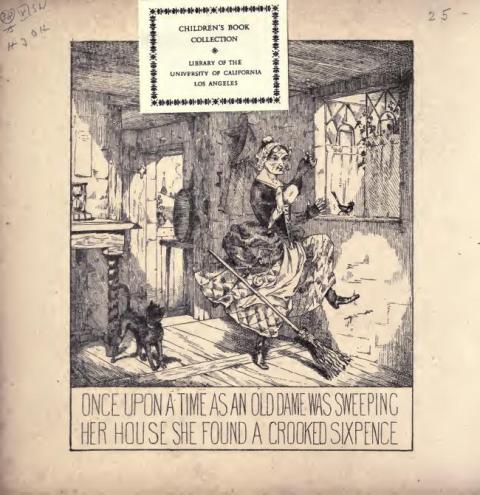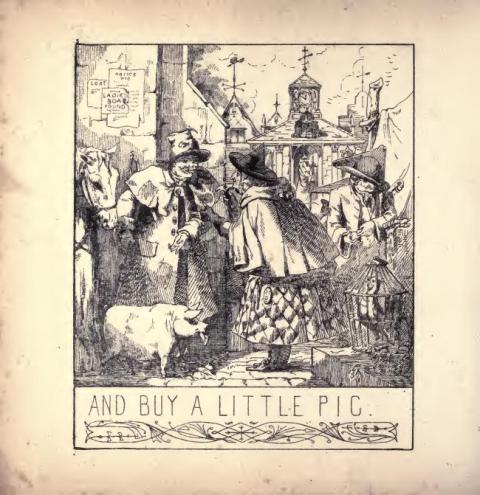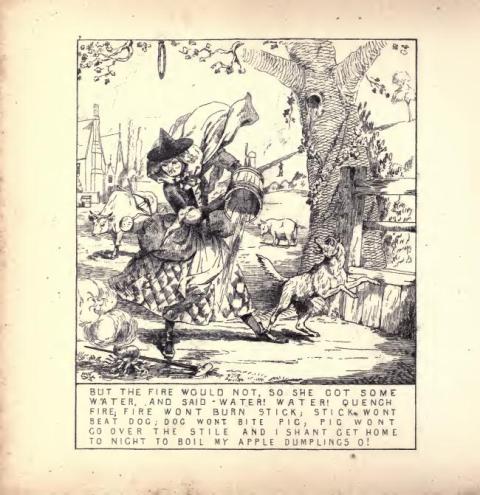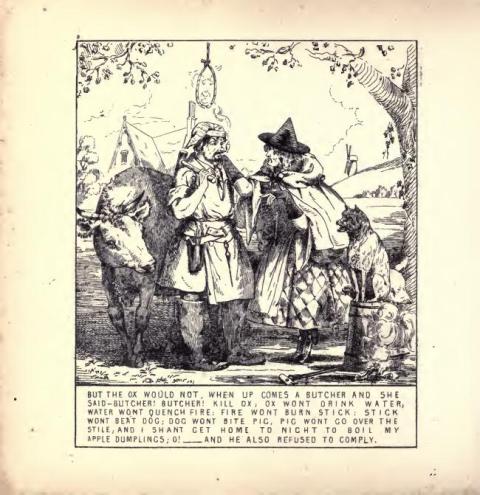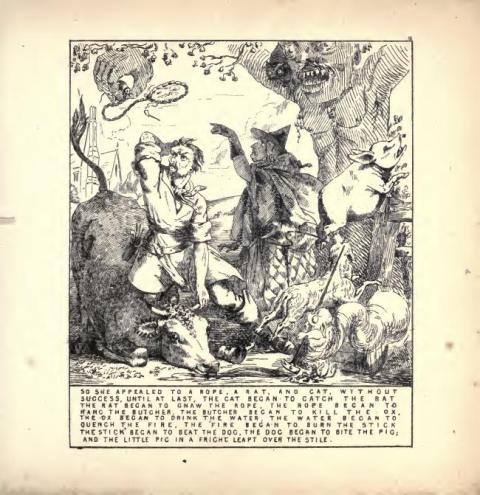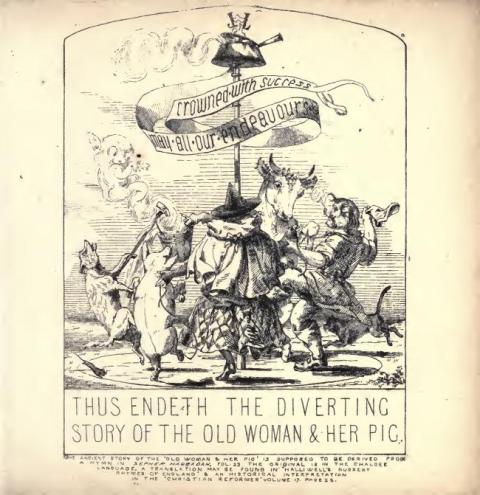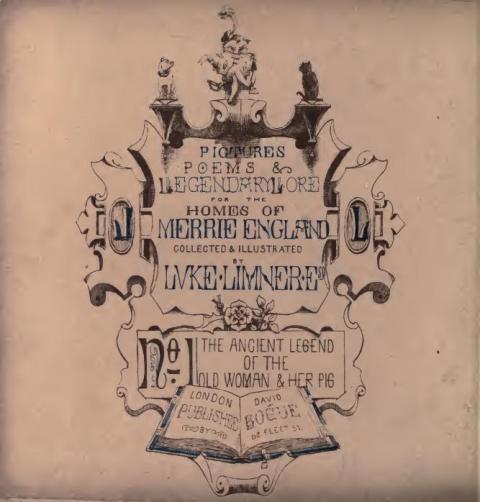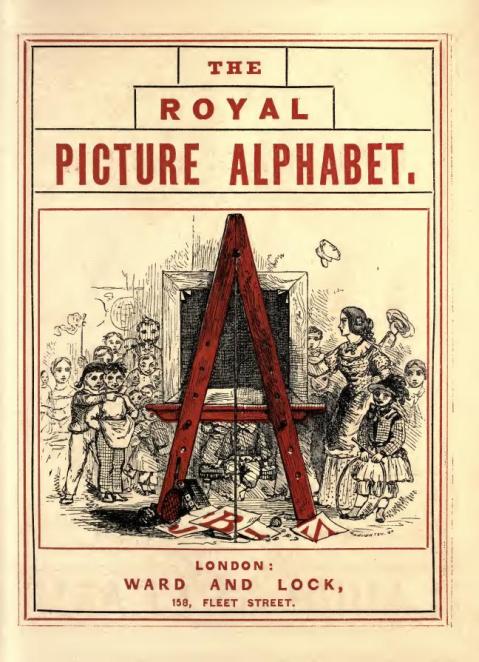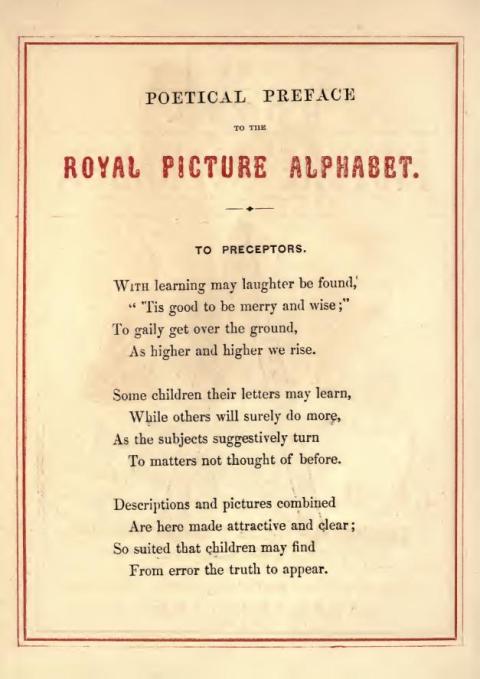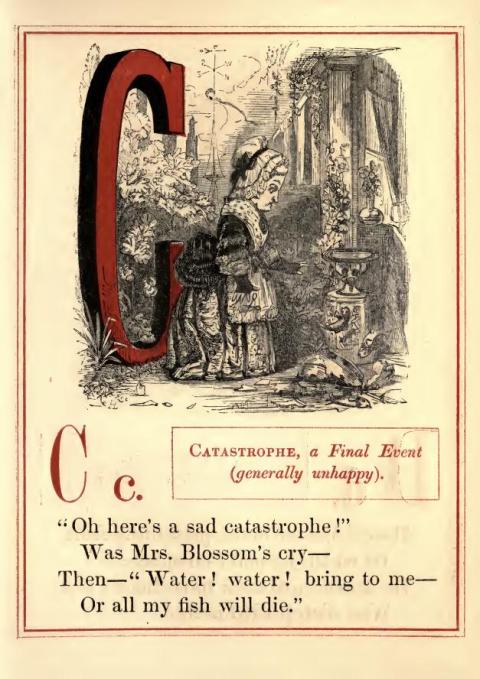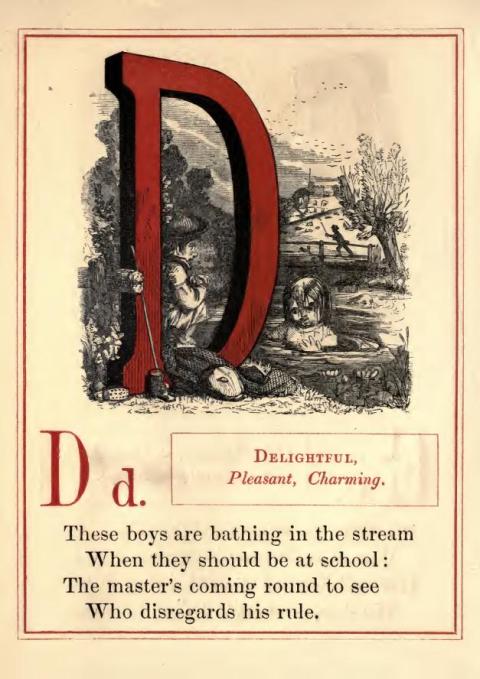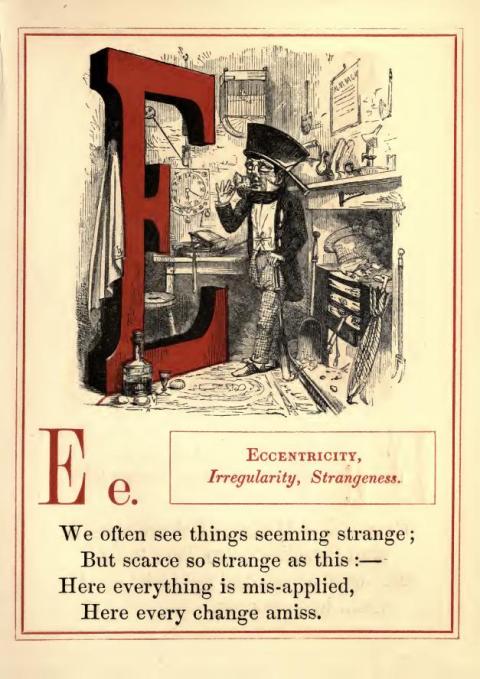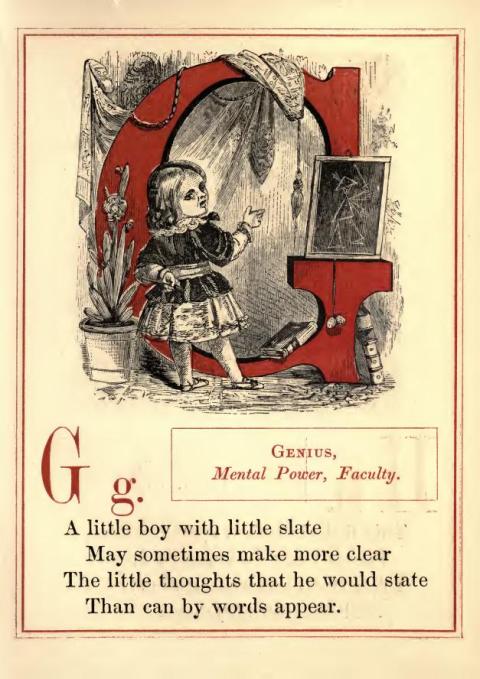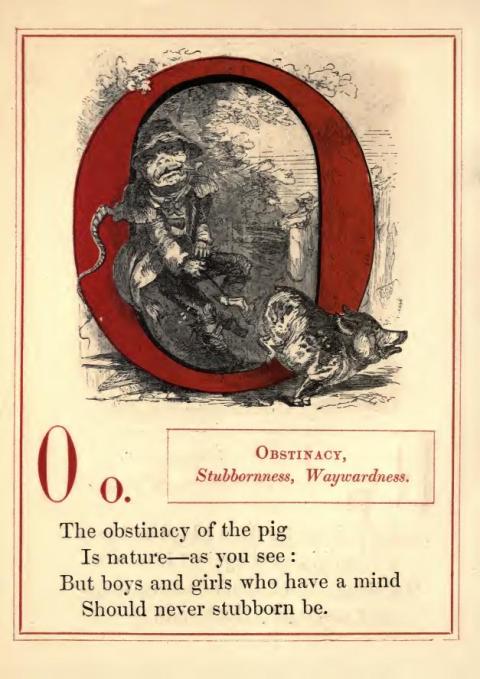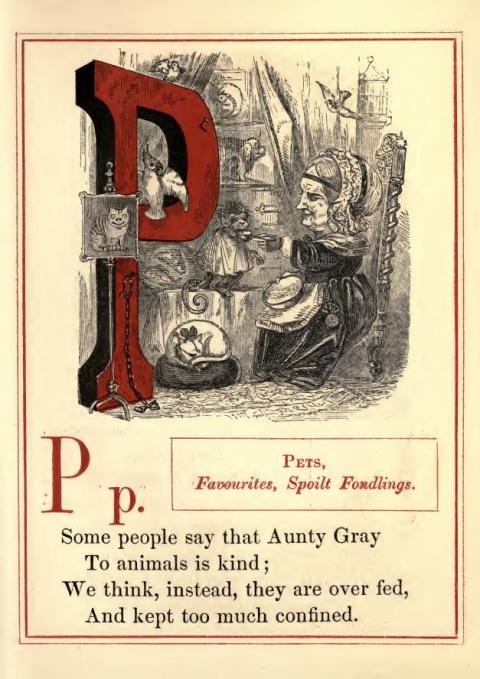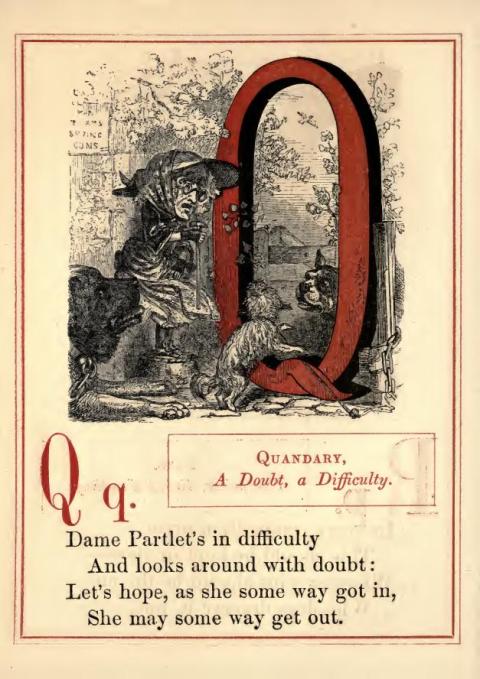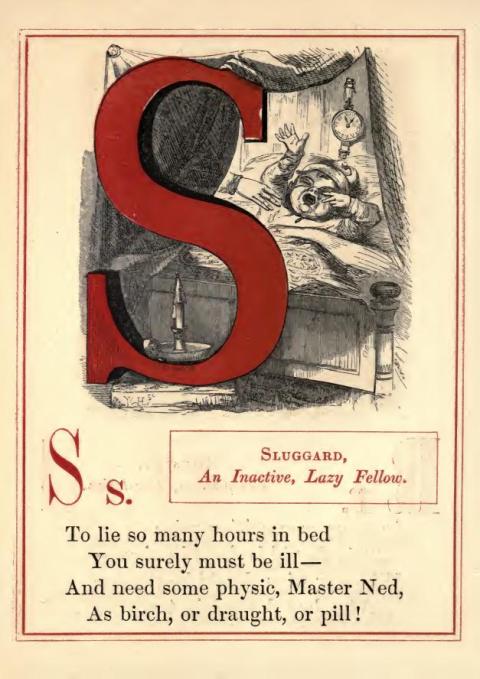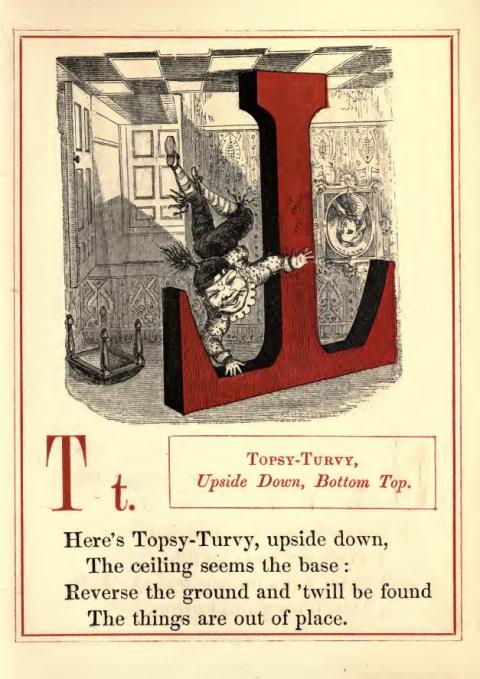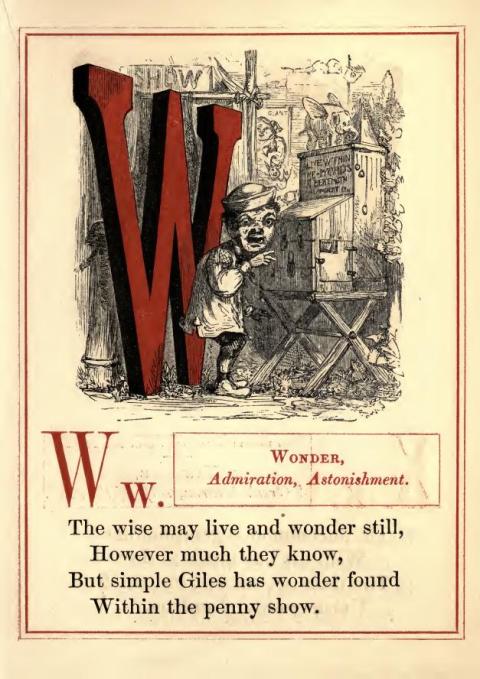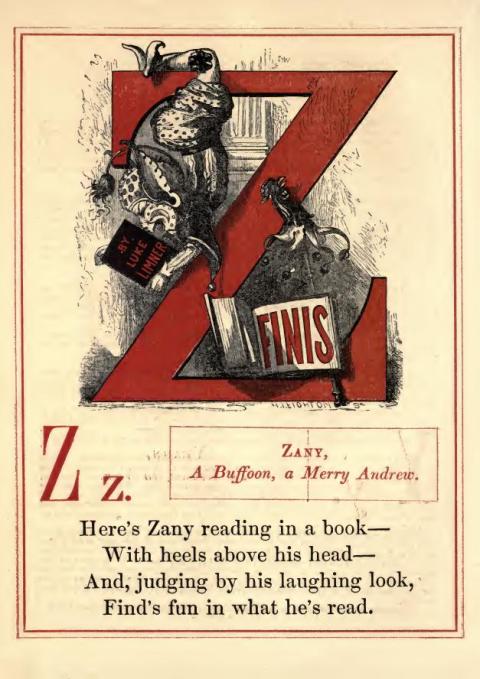Showing posts with label John Leighton. Show all posts
Showing posts with label John Leighton. Show all posts
Thursday, November 14, 2013
The Royal Picture Alphabet by John Leighton
John Leighton (1822-1912) was, like Owen Jones, an extremely gifted, versatile, and prolific visual artist. In addition to 600-1,000 book covers (Ball 77), Leighton designed monograms, bookplates, valentines, Christmas and playing cards, ceramics, stained glass, book and magazine illustrations and title pages, medals, and banknotes. He wrote and lectured on subjects including design, libraries, Japanese art, bookplates, copyright, the postal service and binocular perspective. He was a founding member of the Photographic Society of London (1853), inventor of a “luminous fireplace” (stove) and rubber stereotypes, and an inveterate traveler. Several times during the last decade of his life, he ran unsuccessfully as Liberal Unionist candidate in the London borough of St. Pancras. Leighton’s work graces the covers of many of the mid-century Victorian classics which “found a home in every household, from the palace to the peasant’s cottage.” (Pantazzi 272)John Leighton, who studied with Royal Academy painter, illustrator and designer Henry Howard and with Thomas Seddon, was bound to books by his lineage. His great-grandfather Archibald established himself as binder in 1764, his grandfather Archibald developed book cloth in the 1820s as well as the technique of applying leather-like graining and gold stamping to it in the 1830s. (In 1853, his firm became Leighton, Son & Hodge and employed John to design many of its bindings.) His father John and uncle James had the bookbinding and publishing firm J & J Leighton. Leighton’s brother Henry apprenticed with the Brothers Dalziel engravers and executed many of John’s designs. Various other relations were involved in the color printing firm Leighton Brothers and the lithographic press Leighton & Taylor.Leighton’s illustration, cover design, and writing began appearing in the 1840s. Many of these early works, including The Ancient story of the Old Dame and her Pig, London out of Town, and London Cries and Public Edifices are in a cartoon style yet demonstrate Leighton’s mastery of line, use of cover space and comic touch. He served on the Commissions of the International Exhibitions held in London in 1851 (with Owen Jones) and 1862, Paris in 1855 and 1867, and Philadelphia in 1876, and won various medals at each. For example, he designed the commemoration shield for the Great Exhibition of 1851 and, using his pseudonym Luke Limner, won prizes for binding designs for J & J Leighton and Westley’s. In 1852-3, Leighton’s Suggestions in Design…for the Use of Artists and Art Workmen was published, also under Luke Limner. This style guide, with 102 plates containing 1,100 individual designs, anticipates Owen Jones’ 1856 masterpiece The Grammar of Ornament and is an obvious source for much of the work Leighton produced over the next twenty years.While the gift books of the 1850s-60s frequently had beveled boards, gilt edges, and gold blocking on both covers and the spine, it was common for the eye-catching spine and front cover to be decorated in gold and the back cover in blind. Leighton excelled in intricate work, even within the confines of spine widths, pointing to books’ content with small scenes or objects and expressive titling. John Leighton’s characteristic designs are among the most accomplished of the High Victorian period, made possible not only by his own skill but that of the engravers, die-cutters and finishers who transformed his drawings into gold.
(libraryasincubatorproject.org)
(source: archive.org)
Subscribe to:
Posts (Atom)


